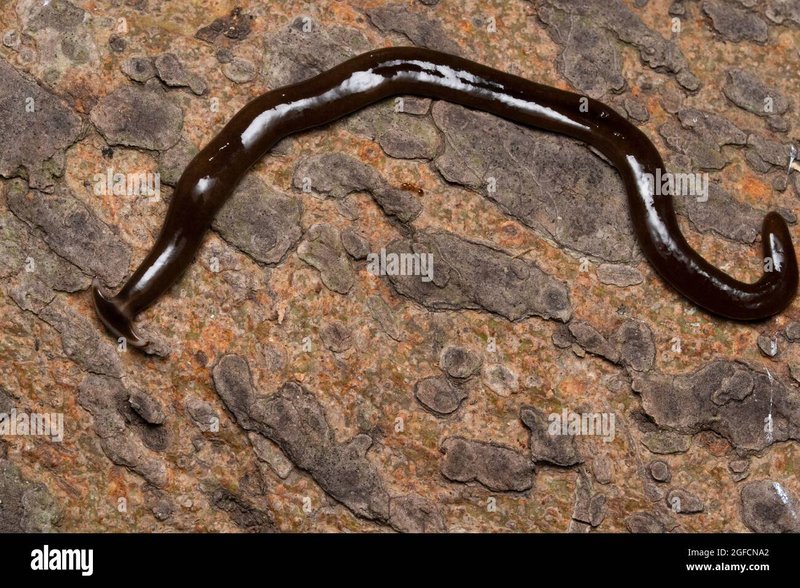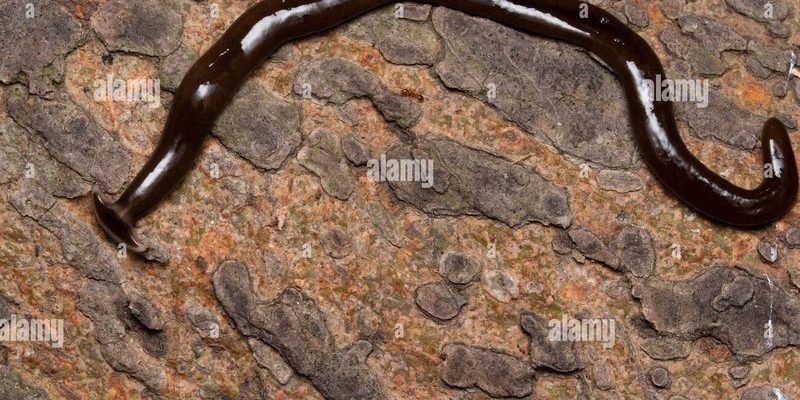
Let’s take a moment to picture this: Imagine standing in a lush green garden. You spot a wriggly creature inching along the soil. Is it a hammerhead worm with its unique shape? A millipede, known for its many legs? Or maybe a slug, slimy and shiny? Understanding these differences not only satisfies your curiosity but can also help prevent unwanted surprises in your garden. So, grab your coffee, and let’s dive in!
What Are Hammerhead Worms?
Hammerhead worms are certainly one of the more bizarre inhabitants of our gardens. They belong to a group called flatworms and are known scientifically as *Bipalium*. One of their most striking features is their head, which resembles a hammer or a shovel. You might be wondering how to spot one. Look for their long, flat bodies that can range from just a few inches to over a foot long!
These worms come in various colors, from brown to grey or even black. While they aren’t harmful to humans, they can be detrimental to your garden. Hammerhead worms are predators of other soil-dwelling creatures, particularly earthworms, which play a key role in maintaining soil health. If you see one, it’s a sign your garden is providing a good environment for many critters—but they can disrupt the ecosystem balance.
With their unique shape and behavior, hammerhead worms offer a fascinating glimpse into the world beneath our feet. They often curl up in a distinctive way when threatened, giving them an even more unusual appearance!
Getting to Know Millipedes
Now, let’s shift our focus to millipedes. Often mistaken for insects, these little critters actually belong to a group called myriapods. One of the defining characteristics of millipedes is their numerous legs—most species have between 30 to 400 legs! Although they look like they have a lot of legs, don’t be fooled; they wouldn’t win any races. Millipedes tend to move quite slowly, which is perfect for their lifestyle of munching on decaying leaves and organic matter.
You might spot millipedes in your garden after a rain, as they love damp environments. Their bodies are cylindrical and typically have a hard exoskeleton that can come in various colors, ranging from brown to black or even reddish hues. One major difference between millipedes and hammerhead worms is that millipedes can curl into a tight coil when threatened, whereas hammerhead worms may simply try to escape.
Millipedes are generally harmless to humans and can even benefit your garden by helping to break down organic material. However, be cautious—some species can secrete a mild toxin as a defense mechanism, which can irritate your skin if handled too much.
Understanding Slugs
Next up, we have slugs, those slimy mollusks that can often be found munching on your prized plants. Though they might not have legs like millipedes, they do have a unique body structure that makes them fascinating in their own right. Unlike the robust exoskeleton of a millipede or the flat body of a hammerhead worm, slugs have soft bodies covered in a slimy mucus layer, which helps them retain moisture.
In terms of appearance, slugs can vary widely in size—from tiny ones just a few inches long to larger varieties that might measure up to 6 inches! Their body colors range from browns to greens, often helping them blend into the foliage. A key feature to identify slugs is their tentacle-like structures on their head. These help them see and smell their surroundings.
Slugs are notorious for being garden pests because they feed on a wide variety of plants, especially tender leaves and fruits. If you’ve ever found holes in your lettuce or eaten strawberries that have been nibbled on, chances are slugs were the culprits.
Comparing Body Structures
When it comes to spotting the differences between hammerhead worms, millipedes, and slugs, their body structures are the primary clues. Here’s a simple breakdown:
| Creature | Body Shape | Legs | Movement |
|---|---|---|---|
| Hammerhead Worm | Flat and long, hammer-shaped head | None | Wriggling |
| Millipede | Cylindrical and hard | 30 to 400 legs | Slow, crawling |
| Slug | Soft and slimy | None (uses muscular foot) | Sliding, slimy movement |
As you can see, each has its own unique structure that sets it apart. If you remember these basic traits, it’ll be a piece of cake to identify them next time you’re wandering outdoors.
Why It Matters: The Role of Each in the Ecosystem
Understanding these creatures goes beyond mere identification; it’s about appreciating their roles in the ecosystem. Hammerhead worms, while predators, can disrupt the balance if they overpopulate. They can impact the health of your soil by decreasing the number of beneficial earthworms.
Millipedes, on the other hand, are nature’s recyclers. They help break down organic matter, enriching the soil. This process is crucial for maintaining healthy plant growth. And then we have slugs, the garden munchers. While they can be pests, they also play a role in the food chain, providing sustenance for birds and other predators.
Being aware of these roles can help you make informed decisions in your garden. For instance, if you notice an uptick in hammerhead worms, you may need to take action to protect your soil’s health.
Tips for Managing Each Species
If you find yourself dealing with these creatures in your garden, here are some friendly tips on how to manage their populations effectively:
- Hammerhead Worms: If you see an influx of these worms, consider removing them by hand and disposing of them properly. This helps protect your earthworm population.
- Millipedes: Generally, you don’t need to worry about millipedes. If you do see too many, try adjusting your garden’s moisture levels, as they thrive in damp conditions.
- Slugs: To fend off slugs, create barriers with coffee grounds, crushed eggshells, or copper tape. These methods help deter them from your plants without causing harm.
By keeping these management strategies in mind, you can maintain a healthy balance in your garden ecosystem.
In the world of gardening and nature, it’s easy to get overwhelmed by the vast variety of creatures lurking beneath the leaves. But distinguishing hammerhead worms from millipedes and slugs can give you a deeper appreciation for the ecosystem. Each plays a unique role, and understanding their differences helps you become a more informed gardener.
So, next time you’re exploring your garden, whether it’s for relaxation or the thrill of discovery, remember these tips and traits. By doing so, you’ll be well on your way to becoming a nature detective, equipped with the knowledge to identify and embrace the fascinating diversity of life in your backyard. Happy exploring!

